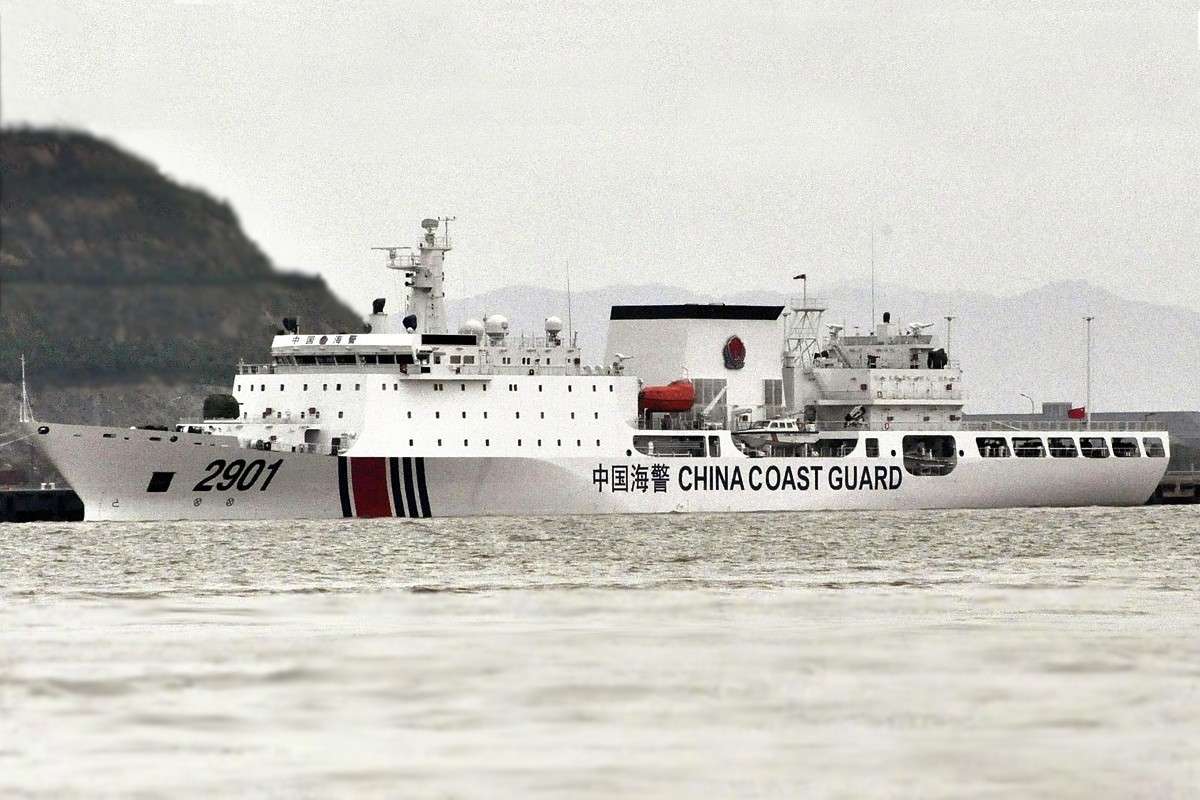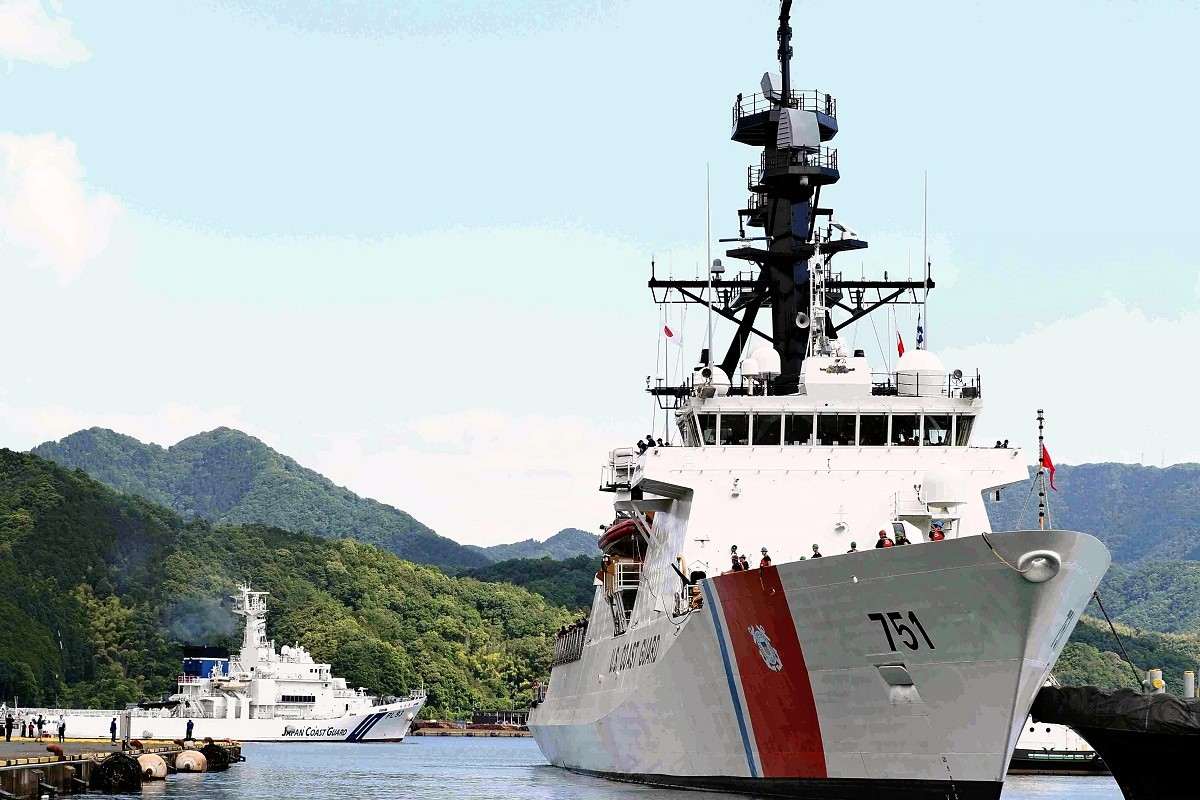China Sent ‘Monster’ Patrol Ship Around Japan’s Senkaku Islands in June, Likely Responding to U.S. Dispatch


Left: The 2901, one of the Chinese Coast Guard’s “monster” ships, is docked at a port in Zhejiang Province, China.
Right: The U.S. Coast Guard’s Waesche patrol ship is seen at Maizuru Port in Kyoto Prefecture for a joint drill with the Japanese and South Korean coast guards, on June 3.
17:23 JST, November 3, 2024
One of the China Coast Guard’s largest patrol ships made a rare move of sailing around the Senkaku Islands in Okinawa Prefecture in June, apparently in response to the United States dispatching a patrol ship to help boost collaboration with Japan and the Philippines, according to Japanese government sources.
The CCG vessel’s move has apparently increased tensions over the Senkaku Islands, as Japan, the United States and the Philippines have drawn closer together to cope with China’s expansion on the seas.
The CCG vessel that came near the islands in June was the 2901, a 10,000 ton-class vessel, according to the sources. The vessel is larger than any Japan Coast Guard patrol ship and it has a military-grade 76mm naval gun.
The CCG 2901 is one of the world’s largest ships for maritime law enforcement. Experts believe it has capabilities equal to a standard warship.
The ship is 165 meters long and went into service around 2015. In October, it took part in a large-scale military drill that China conducted around Taiwan. Experts believe that it is the same model as the CCG 5901, which is active in the South China Sea. Ships of this model have been called “monster” ships.
It is rare for the CCG 2901 to be detected around the Senkakus. In the mid-June incident, it was confirmed that the vessel sailed between Kume Island, which is 100 kilometers west of Okinawa Island, and Taisho Island, part of the Senkaku archipelago.
Aiming to support a free and open Indo-Pacific rooted in the rule of law, the United States dispatched the Waesche, a large U.S. Coast Guard patrol ship, to Asia.
The Waesche took part in a trilateral joint drill with Japanese and South Korean coast guards off Maizuru, Kyoto Prefecture, on June 6, and made a port call in South Korea.
The U.S. vessel then arrived at White Beach, a U.S. naval port in Uruma, Okinawa Prefecture.
That was when the CCG 2901 made its unusual move. Seeming to mirror the timing of the Waesche’s departure from White Beach to head south to the South China Sea, the CCG 2901 began sailing southward between the Kume and Taisho islands.
The Chinese vessel then changed course to the southwest and sailed near the outer edge of Taisho Island’s contiguous zone (a roughly 22-kilometer-wide belt that surrounds territorial waters).
It continued south of the Senkakus’ Uotsuri Island before heading north along the Japan-China median line.
China is seeking to become a major maritime power and has taken coercive actions with coast guard vessels and warships sent to the East and South China Seas.
As many as four CCG vessels are stationed around the Senkaku Islands at all times. But the most recent move with the CCG 2901 was unlike any in the past. The Japanese government is growing increasingly concerned.
After leaving Okinawa Prefecture, the Waesche made port calls in Singapore and Vietnam. It later conducted a drill with the Philippines’ coast guard. The Philippines has been in disputes with China over territory in South China Sea.
"Politics" POPULAR ARTICLE
-

Japan to Support Central Asian Logistics Route That Bypasses Russia, Plan to Be Part of Upcoming Summit in Tokyo
-

Japan to Tighten Screening of Foreigners’ Residential Status by Providing Information of Nonpayment of Taxes
-

Chinese, Russian Bombers Flew Unusual Path by Heading Toward Tokyo; Move Likely Meant to Intimidate Japan
-

Japan Plans National Database to Track Foreign Ownership of Real Estate, Land as It Weighs New Rules
-

Up to 199,000 Deaths Estimated From Mega-Tsunami; Most Recent Occurrence Took Place in 17th Century
JN ACCESS RANKING
-

Tokyo Economic Security Forum to Hold Inaugural Meeting Amid Tense Global Environment
-

Keidanren Chairman Yoshinobu Tsutsui Visits Kashiwazaki-Kariwa Nuclear Power Plant; Inspects New Emergency Safety System
-

Imports of Rare Earths from China Facing Delays, May Be Caused by Deterioration of Japan-China Relations
-

University of Tokyo Professor Discusses Japanese Economic Security in Interview Ahead of Forum
-

Japan Pulls out of Vietnam Nuclear Project, Complicating Hanoi’s Power Plans























